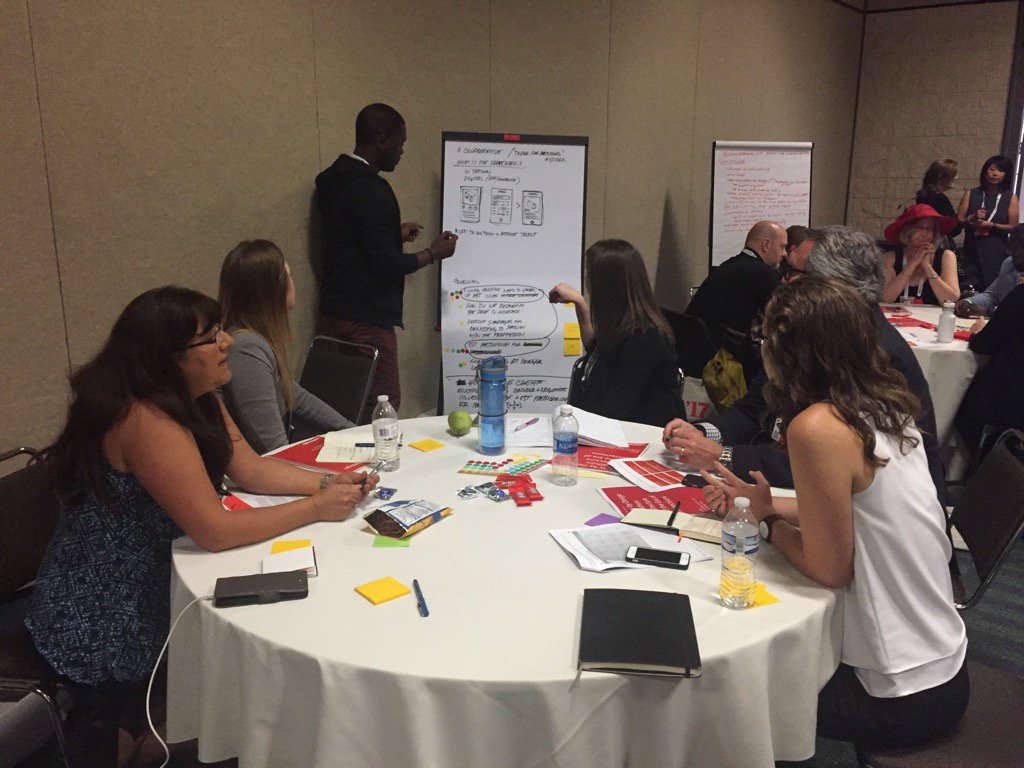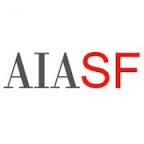By Sarah Glass (in collaboration with Amanda Dunfield, Bryan C Lee Jr, Patricia Canevari, Stephanie Herring, and Tom Powers)
In April, we hacked. AIA SF’s Equity by Design Committee hosted the Architecture in the Era of Connections Hackathon at the AIA Conference on Architecture ‘17, where a room full of perfect strangers of various ages, experiences, and ethnicities were asked: “What keeps you up at night? And how are you going to fix it?”
How did we define our problem?
We started with several issues that we see in practice. We talked about the gap from education to practice, ways to connect with people of different generations, reverse mentorship, career pinch-points, and staying “relevant” as a firm. Our conversation about these separate issues started to blend into one and we began to discuss ways to close the generational gap. This issue is present in both directions - younger employees want to be able to talk to those with more experience to further their education and more seasoned architects want to be able to understand how to attract and retain new talent for firm development and continued innovation. As a group, we identified two gaps: the lack of effective mentorship and the lack of accessibility to mentors. These key factors widen the disconnect between the generations in the workforce. This dialogue informed our problem to hack for the next three hours:
How can we redefine and re-engage mentorship within the practice of architecture?
Getting started.
We agreed that mentorship (as a framework) is the key to success at two scales: at a firm, and for the profession. In all candor, we shared with each other that we had a difficult time with the word “mentor” as it came with so many preconceived notions and, therefore, a negative connotation implying limitations. We didn’t want our mentorship network to work in a singular (usually top-down) direction. It was important to our group that mentorship works in every way (peer to peer, employee to employer, student to practitioner and vice-versa). Redefining the word “mentor” lead us to our a-ha moment.
Team SPARC in Action
A-ha!
We found a spark, and with that came our answer. Mentorship is about connectivity, feeling supported, and being valued. But beyond this, you need the opportunity to find a potential mentor - a partner to have a dialogue with about the multiple facets of our professional life. Introducing: SPARC, the Social - Professional - Architectural - Resource - Community.
We questioned what makes a mentor/mentee relationship work. This app, SPARC, will provide the architectural community a way to connect with people regardless of geographical location. By expanding the idea of what mentorship can be, we can connect people beyond an individual firm, location, gender or age, in order to share our collective knowledge to better ourselves and improve the profession.
What is the framework?
SPARC is a mentor match-making App. As a user, you would input your areas of expertise to build your profile. These are the areas in which you will be asked to participate as a mentor. The app is searchable by topic. To use this function, you will search for a topic for which you need help or advice. The app will then provide you with the users who have listed this as their area of expertise and passion. You can then start a conversation on the spot for quick, reliable answers. These relationships can be as simple as asking about a flashing detail or as involved as asking for advice for your career path.
Crafting the Perfect Pitch
One of the main features of the EQxD Hackathon was to have each team prepare and present a 5 minute elevator pitch to communicate the game changing solution that each group identified. There were several criteria that the jurors would be evaluating each team's pitch - Relevance to equitable practice issues, user experience & feasibility, impact & metrics, as well as clarity and creativity of the pitch. Teams were told that they could use any means available to communicate their ideas.
Using improv, poster paper with illustrative sketches, and rigorous group rehearsal outside the main room in the quieter hallway of the convention center, Team SPARC was able to capture the audience with humor (Tinder for Mentors...) and creativity (Roll down paper to spell out S.P.A.R.C.) in order to communicate a strong idea for meeting the challenges of mentoring in the profession. "Swipe right on your career".
TEAM SPARC : (L to R) Amanda Dunfield, Tom Powers, Sarah Glass, Patricia Canevari, Stephanie Herring and Bryan C Lee Jr.
Sharing the Pitch with at the #EQxDHack17 Happy Hour - "Swipe right on your career".
Team SPARC take aways.
“It was great that our team had a really diverse group of individuals. There was a range of ages and experience levels. We also all worked at different size firms. I learned from my team members that there is a common desire across generations to improve the mentorship practice in firms. It will take time, but if mentors put in the effort to listen and to share with younger generations, it will be an investment in the future success of their firms and an investment in the future success of the architectural profession.”
“We started as complete strangers but through the course of 4 hours we each shared our stories, we laughed, and we hacked. We kept asking “why” to get to the root of our perceived problems. In the end, we found that we were all really talking about the same thing - access to mentorship. Each of us believe that a rising tide lifts all boats. This was our common ground.”
“I came to the hackathon not quite understanding what we would actually do and left with a tool that can be used within any setting, for any problem, with any group. The hack process lead our team from identifying an entrenched challenge to quickly developing what seemed like an outlandish solution at first. The deeper we dove, the more real the idea became. By being open to all ideas and by following the energy of the group, the initial “crazy” idea turned into something meaningful and worthwhile, convincing all of us of its value and immediate need.
SPARC acts much like the hackathon itself by leveraging the skill sets of all members, so that the individual is made stronger by the group and, therefore,can accomplish things that would be seemingly impossible alone. SPARC creates a platform to develop authentic connections regardless of geographic location, firm size, stage of career, gender and age - to bring equitable mentorship within the practice of architecture to everyone. Now, we only need to get SPARC developed so that we can utilize this much needed tool!””
EQxDHackathon Blog Series
Access the entire experience of the Equity by Design Hackathon here:
- #EQxDHack17 Recap and Blog Series
- Team S.P.A.R.C. - Swipe Right on Your Career (#EQxDHack17 Winners)
- Team "My Block" Explores Architects' Accountability to our Communities
- Team "Equator" - Toolkit for Assessing and Improving Equitable Practice
- Team "Our Town" - How do we increase public access to Architecture?











